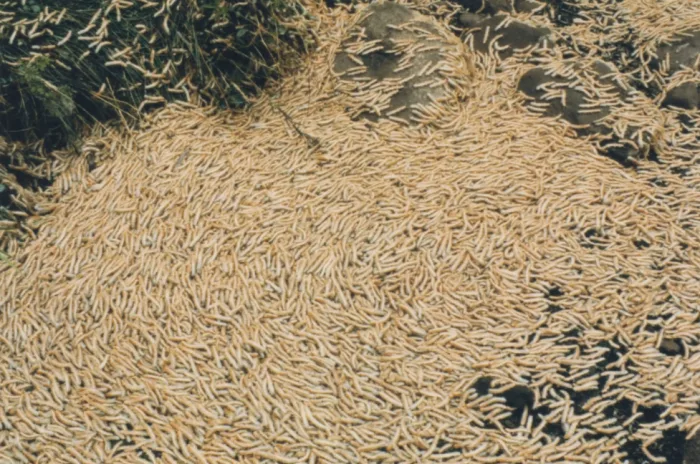
Every 8 years, these millipedes swarm train lines in the fall
Scientists studies the millipedes for fifty years to form their conclusions.
Fall can be a strange time in mountainous Japan. Every eight years, millions of millipedes swarm local train lines, sometimes forcing the trains to suspend services.
Because of this, the species -- Parafontaria laminata armigera (P. l. a.) -- has earned the nickname 'train millipedes,' and it appears they exist on an eight-year life cycle, according to the findings of a recently-published 50-year research project.
The multi-year life cycle is a rare one. Before the findings, periodical cicadas were the only confirmed periodical animals with long life cycles, the study authors write.
Cicadas spend most of their lives underground, emerging in the millions in 13 and 17 year intervals, but scientists still aren't sure what drives there emergence cycles.

A swarm of train millipedes. Courtesy: Keiko Niijima)
For their paper, scientists traced the cycles of P.l.a. in two locations. Lead author and government ecologist Keiko Niijima began observing the millipedes in 1972, and sites were surveyed between one and five times annually until 2016.
By collecting millipedes found during their observations, scientists discovered they have seven life stages, or instars. They spend winters in the soil hibernating and molt in the summer.
"They become adults by the eighth molting after eight years from egg deposition," the researchers write.
Adults swarm the surface in September and October to mate. They hibernate in the winter, some of them mating again in late spring.
"In July, [females] lay approximately 400–1000 eggs and die within a month," the study authors write.
"In summary, this millipede needs 7 years from egg to adult and one more year for maturation. Thus, the 8-year periodicity of P. l. a. was confirmed by tracing the complete life history from eggs to adults in two different locations."
On an individual scale, the millipedes are tiny, measuring about 3 cm in length. They play an important role in the local ecosystem, cycling nitrogen in forests.
The paper can be found in Royal Society Open Science.










